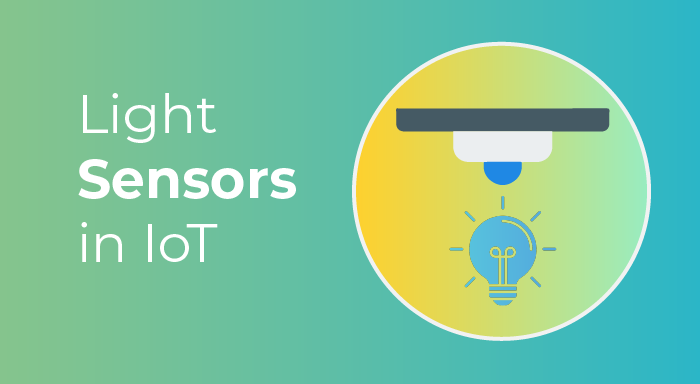In this blog post, you will learn more about several different types of light sensors, the way they are used across several industries as well as the many advantages they possess.
What are Light Sensors?
Light sensors are handy gadgets in today’s progressively complex and artificially created environment. They serve an important function in detecting light intensities and transforming the received data into electrical stimuli that may cause several operations. From the gadgets that consumers use in their day-to-day lives to industries where the application of smart technology is perceived, light sensors add more value and make things more efficient in the use of energy.
Types of Light Sensors
1. Photoresistors (LDRs)
There are also light-dependent resistors which are usually termed as photoresistors among the simplest of the light sensors. Known as photoconductors, these are made from semiconductor materials such as cadmium sulfide (CdS) which have their conductivity decreasing with an increase in light intensity. This property gives them immense benefits in all situations where light intensity is to be detected.
Application:
- Street Lighting: It means that through LDRs one can program the streetlights to switch on when it is dark and to switch off when it is bright.
- Garden Lights: These sensors enable the change of the various bulbs in solar-powered garden lights with the prevailing light conditions to extend the battery life.
2. Photodiodes
Photodiodes are specifically designed to operate as semiconductor lighting appliances that propel the conversions of light to current. Photodiode is an optoelectronic device that generates electron-hole pairs when exposed to light, which causes a current that depends on the intensity of the light falling on it. This capability makes them suitable in applications where there is a need for the detection of light change with a quick response to the above table.
Key Features:
- Response Time: Due to fast response to changes in light intensity, the photodiodes are very useful in communication devices.
- Modes of Operation: Photovoltaic Mode: Works in a fashion similar to a small solar cell which converts the light into voltage.
- Photoconductive Mode: Works under reverse biased conditions which offers it the capability to be sensitive to variations in light intensity.
Applications:
- Optical Communication: In fiber optics, data transmission is one of the key areas that request these types of waves.
- Safety Systems: Usage in smoke detectors and alarms to provide rapid action in response to changes in the environment.
3. Phototransistors
Phototransistors are similar to photodiodes but they also include the characteristic of a transistor with the signal amplification of the electrical signal created by the light. Some of the advantages of phototransistors include; that they are more sensitive than photodiodes and also able to switch higher currents.
Advantages:
- High Gain: Phototransistors can amplify weak light signals significantly, making them suitable for use in applications requiring precision.
- Wide Range of Applications: Their ability to respond to lower levels of light makes them useful in various devices.
Applications:
- Automatic Doors: They detect user presence, triggering the door mechanism.
- Remote Controls: Commonly used in TV and remote-controlled devices.
4. Ambient Light Sensors (ALS)
Ambient light sensors are specific sensors that are used for measuring the general illumination within the vicinity. They adapt the settings of the devices to the current location lighting conditions to enhance the enjoyment as well as effective usage of power.
Key Features:
- Automatic Brightness Adjustment: Features such as auto screen adjustment facilitate better screen visibility when using devices such as smartphones and tablets in different environments.
- Energy Conservation: Some of them help in saving energy by controlling the use of light.
Applications:
- Consumer Electronics: Included in smartphones, tablets, and televisions for ease of use and at the same time extending the battery life.
- Smart Lighting: In an ILS it is employed to control illumination levels as indicated by the levels of natural light.
5. Infrared Sensors
Although it is not a conventional light sensor, infrared (IR) sensors detect heat emanating from warm objects inclusive of human beings. These sensors are crucial where distances or movements are detected, such as in different processes.
Applications:
- Motion Detection Systems: Its wide uses include security alarm installations and automated room lighting controls.
- Remote Controls: Make it possible for users to employ gadgets from this distance.
Applications of Light Sensors
1. Smart Home Systems
Light sensors are also significant components of smart homes since they are central to automation as well as the management of energy use. They have characteristics such as people detection to light control thus making sure that the lights are only on when necessary. All these can help considerably reduce energy use and at the same time, convenience is greatly improved.
2. Mobile Devices
Light sensors are being used in most smartphones and tablets, where they can control the brightness thereof depending on the light in the environment. It enhances the usability of the user since it would be easier to read than when the screen is very bright and also saves the battery by dimming the screen especially when there is less light.
3. Commercial and Residential Lighting
Most of today’s lighting systems employ light sensors to regulate the amount of energy consumed. For instance, the use of outdoor lights can be automated in such a manner that they switch on at night and off in the morning, thus eliminating unnecessary use of light. This automation leads to very many benefits in terms of safety, and power consumption, especially in gardens, and yards.
4. Industrial Automation
In industries, light sensors improve the safety of the working environment and control various processes. They can easily pick instances of low or high light intensities, which may point to a safety infringement or a problem with the equipment, to give an example. Besides, these sensors assist the management in monitoring and controlling the factory lighting to prevent wastage and increase efficiency.
5. Healthcare
Light sensors are essential in various medical devices, such as pulse oximeters, which use light to measure blood oxygen levels. These sensors provide critical data in real-time, allowing for better patient monitoring and care.
Also Read
Motion Sensor | A Comprehensive Overview
Proximity Sensor: A Comprehensive Guide
Humidity Sensors In IoT? Know the Types, Applications, and Benefits
Benefits of Using Light Sensors
1. Energy Efficiency
Light sensors greatly enhance energy efficiency by automatically adjusting systems based on light conditions. This results in reduced electricity bills and lower carbon footprints, making them environmentally friendly.
2. Enhanced User Experience
By automatically adapting to environmental lighting conditions, light sensors improve usability in consumer electronics. Automatic brightness adjustments in smartphones and tablets prevent user discomfort and enhance visibility.
3. Safety and Security
Light sensors improve safety by enabling timely responses to changes in environmental light levels. For instance, they can trigger alarms or turn on lights in evacuation routes during emergencies.
4. Cost Savings
By reducing energy consumption and improving operational efficiency in businesses, light sensors contribute to substantial cost savings. For residential users, automating light controls through sensors means lower utility bills and prolonged appliance life.
5. Versatility
Light sensors have a wide range of applications. Their adaptability and reliability make them suitable for various industries, from consumer products to healthcare.
Conclusion
Light sensors are a fundamental part of current technologies that enhance convenience, safety, and efficiency across multiple sectors. With innovations continuing to emerge, the potential applications and benefits of light-dependent IoT sensors will only expand. Understanding how these devices work and their practical uses allows individuals and organizations to leverage their capabilities for improved performance and sustainability.
As you consider your next project or purchase, remember the value light sensors can bring through their multifaceted advantages. For further inquiries or personalized guidance on light sensor applications, feel free to contact us.
Light Sensors in IoT - FAQs
1. What is a light sensor?
A light sensor is an electronic device that detects and measures light intensity. It converts light into an electrical signal for further processing, enabling various functionalities in devices.
2. How do photoresistors work?
Photoresistors operate by changing their resistance in response to light levels. When exposed to brighter light, their resistance decreases, allowing more current to flow through, enabling their use in light detection applications.
3. What are the main applications of light sensors?
Light sensors are widely used in smart home settings, consumer electronics, industrial automation, security systems, and healthcare devices, among others.
4. What distinguishes photodiodes from phototransistors?
Photodiodes generate current directly from light exposure, while phototransistors also amplify this current, allowing them to control larger loads. This makes phototransistors more versatile in many applications.
5. How do light sensors contribute to energy efficiency?
By automatically adjusting lighting and device settings based on ambient light levels, light sensors minimize energy use, leading to lower operational costs and decreased environmental impact.



